Anxiety
The Field of Play: Anxious and Avoidant Attachment on Dates
Field theory helps explain the seemingly complex patterns in our relationships.
Posted June 6, 2019 Reviewed by Jessica Schrader
If you have an anxious attachment style and you are dating (and reading this article), you are probably wondering why you keep being attracted to and getting involved with avoidant dating partners. If you are avoidant, you probably cannot figure out why you keep attracting anxious people who demand so much of you emotionally and always seem to want more than you can (or want) to give. In either case, you are likely to feel frustrated, misunderstood and like you just can’t win.
But the pattern is actually fairly easy to understand using Kurt Lewin’s “field theory.” Lewin was an early Gestalt psychologist who believed that relationships and interpersonal conflict could be understood as an interaction between the person’s personality and the environment, which form a psychological field that predicts behavior. Once you understand the pattern in the field, you can choose consciously how to change the behaviors occurring in it.
In a one-on-one dating situation, the field is the emotional/energy space around and between two people. What the energy in the space seeks is balance. In other words, the total amount of emotional energy in the space will remain constant. If one person withdraws energy from the space, the other person will make up for it by putting more energy into the space.
Let’s look at some different scenarios that might be observed in the progression of a hypothetical relationship.
This first diagram depicts an anxious and avoidant person on a first date.
At first, when they come together, both people bring an equal amount of energy onto the field. After all, they don’t know each other yet (or what the other person’s attachment style is!).
Entering the Field ... Let the Dance Begin!

Each person leads with what is natural for them. Based on stereotypes of the different attachment styles, the avoidant person will be confident and self-assured. He/she will be complimentary, perhaps a bit seductive or flirtations, and might be thinking about how to make the other person feel positive about the interaction. The anxious person will likely want the other person to know they like them and to elicit interest and attraction. The anxious person will want to know that the avoidant person finds them interesting and desirable.
Now the anxious person naturally is excited and may take up a little more than their share of the conversational turn and use more words. The avoidant person will not at all mind this because it takes the pressure off of them to self-disclose and they don’t have to work as hard. Instead of talking about themselves or working as hard to drive the conversation, the avoidant person may show interest by asking questions. The anxious person is likely to enjoy this attention and feel energized and talk more. To this, the avoidant person may smile, nod, laugh and give some refrains … but in reality, say less and less. The anxious person doesn’t notice. The anxious person is thinking, “Hey this person seems to really like me and be into what I am saying. I’ll keep this up. This is going well.”
But, neither person notices that the avoidant person has actually pulled some personal energy out of the interaction. Because the energy in the shared space needs to be in balance, the anxious person compensates by putting in more resources into the shared space.
The Space Gets Out of Balance!
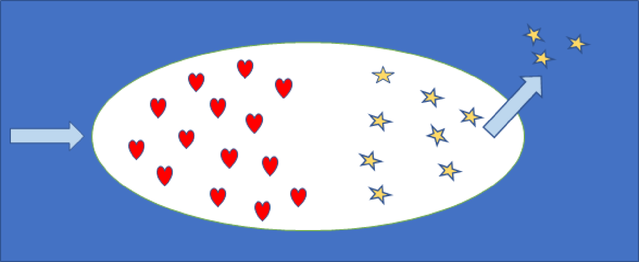
And we might still be on the first date!
But, usually, both people are content in their roles for some time.
Gradually, however, the anxious person’s emotional system will start to pick up cues that something is wrong; That the avoidant person might not be fully into the relationship. And they would be correct. It isn’t that the avoidant person no longer cares, but the displaced resources from the avoidant person don’t just evaporate. They leave the shared relationship space, but they have to go somewhere. So, they get redirected.
Redirecting Resources to Other Fields
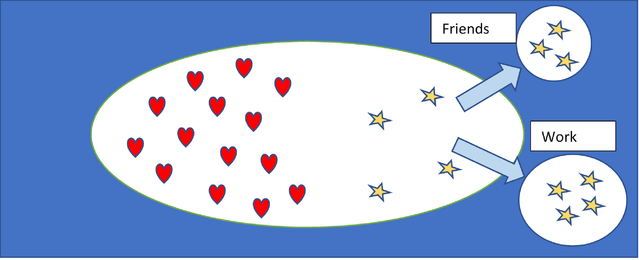
Now the anxious person may start to apply some pressure to get the avoidant person to bring energy back into the shared space. But this pressure could change some of the warm energy to negative energy. But it doesn’t take any anxious energy out of the field and may actually increase it. Remember, the only way for the avoidant person to come back into the field will be for the anxious person to withdraw some emotional energy out of the space.
Anxious Person Puts More Negative Energy into the Space
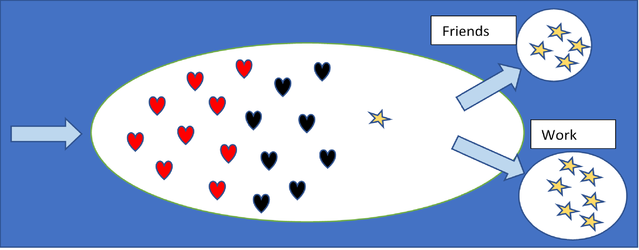
But this is the hard part and where things often go very wrong. As the anxious person withdraws some energy out of the system, wanting the avoidant person to bring their energy back into the space, there will be a time lag. The avoidant person may not immediately sense the energy shift and know it is time to come back in (and may be afraid to if the energy has become too negative). They may stand with their energy still on the sideline not knowing what to do.
Anxious Person Pulls some Energy off of the Field but Some of it is Still Negative
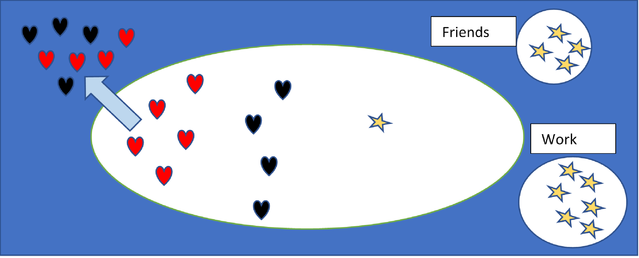
For a time, the system will be out of balance (in disequilibrium). During this phase, the anxious person is likely to feel highly anxious, scared and dysregulated. They may start throwing energy into the space and withdrawing energy out of the space rapidly and in a haphazard manner (which will look crazy to the avoidant person who is just sitting there not moving their energy).
If the anxious person comes back into the space too hard, they may knock the avoidant person right out of the ring. If they pull too much energy out of the space, they may make a foolish decision and try to put it into another space that was not well-chosen (like running into someone else’s arms and cheating). If at this moment the avoidant person completely withdraws from the space, there will be no space for the anxious person to come back into when they realize that they have made a mistake.
Impulsive and Haphazard Energy Redirection
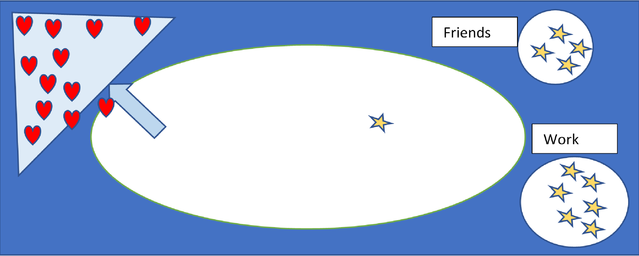
So, what would help?
- The anxious person needs to withdraw some energy out of the system without changing the energy that is in the system to be negative.
- The anxious person could use some containment to gently hold the energy that was pulled off of the field in a loving way until it can be put back into play. This keeps the energy from being impulsively diverted to other people. A caring family, therapist or friends can provide this "holding environment."
- The avoidant person needs to realize that they were too willing to take their energy off of the field in the early phase of relationship formation.
- The other systems that the avoidant person has placed energy in need to give feedback that although the energy is enjoyed by those systems, this energy placement may not actually be in the avoidant person’s best interest. So, friends might say, "You should really go spend some time with your love and not hang out with us so much."
- The avoidant person needs to have the courage to put some energy back into the field.
Energy Correction in the Field
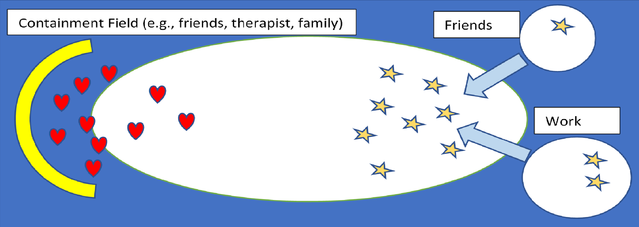
Conclusions
To me, the interplays depicted here are straight forward and simple. This isn’t rocket science. It is normal and involves a logical flow of energy in a social system. And, I hope that the reader can see that it is blameless. No one is at fault here. The damage happens when people do not consciously recognize these patterns and suspected malevolent intent or intentional cruelty on the part of the other person.
One should also recognize that in reality, there are multiple other social systems adjacent to, surrounding, and maybe even in competition with our relational field for energy. Each of these systems will have inflows and outflows of energy that influence the other systems. But, for now, let’s keep it simple.
Grab a pen and paper and see if you can diagram the energy flows in the relationship space between you and your relationship partners.
And, please keep in mind that these do not necessarily have to be romantic relationships. I have seen multiple instances where avoidant women and their anxious women friends interact on this same field with much the same dynamics. It seems to play out less with men and other men because I suspect that anxious men are more likely to attempt to hide their energy needs from their dismissing male friends. Nevertheless, the field of play always exists in any relationship, romantic or otherwise, and we can always see that space more clearly with the use of a pen. And, please forgive the gendered dating examples. I recognize that there are innumerable gender and sex combinations in relationships and that they usually follow the same patterns irrespective of sex or gender identity.
References
Lewin, K. (1951). Field theory in social science. New York: Harper.
Lewin, K. (1938). The conceptual representation and measurement of psychological forces. Durham, NC: Duke University Press.




